MuDi - Museo Diocesano di arte sacra di Taranto
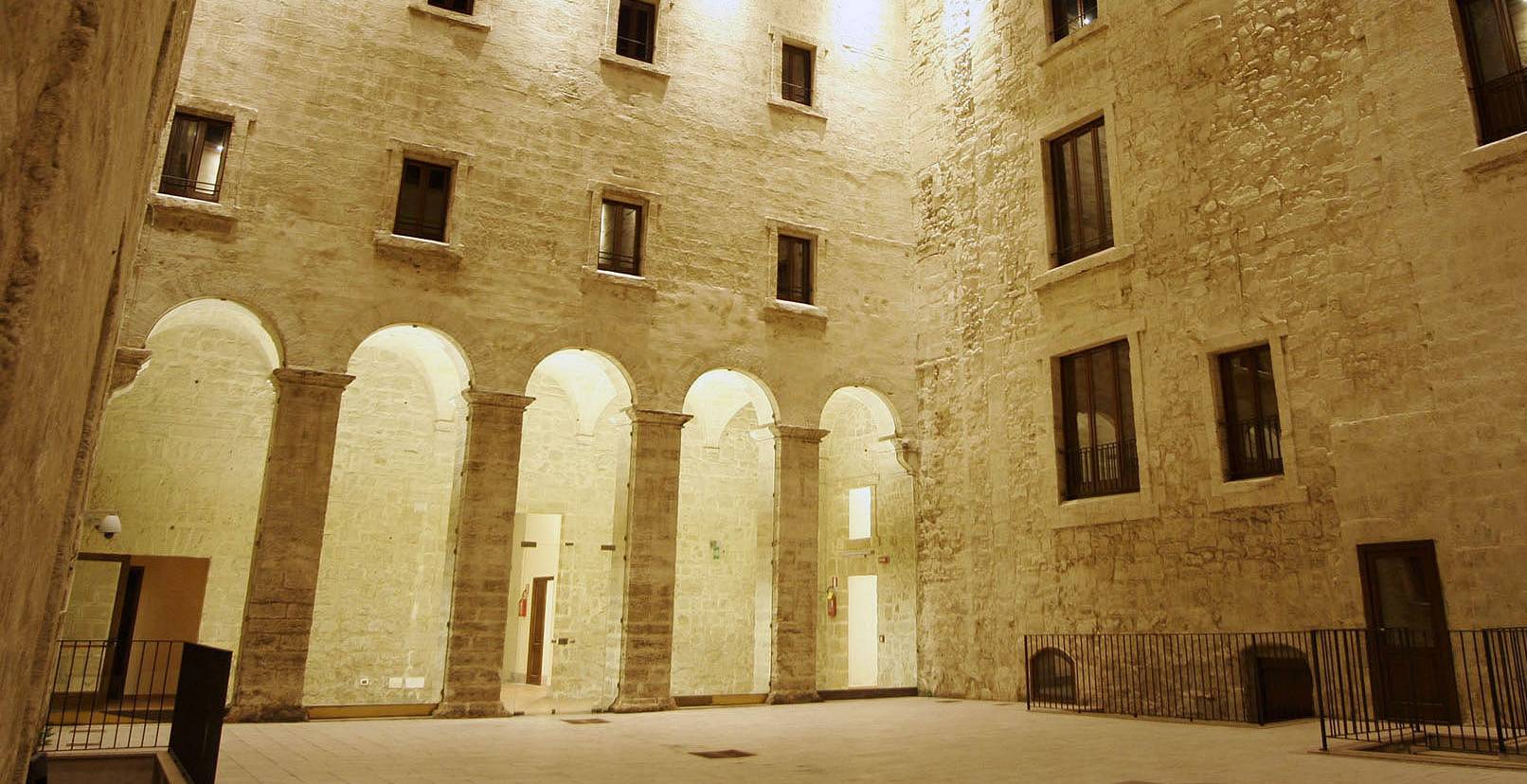
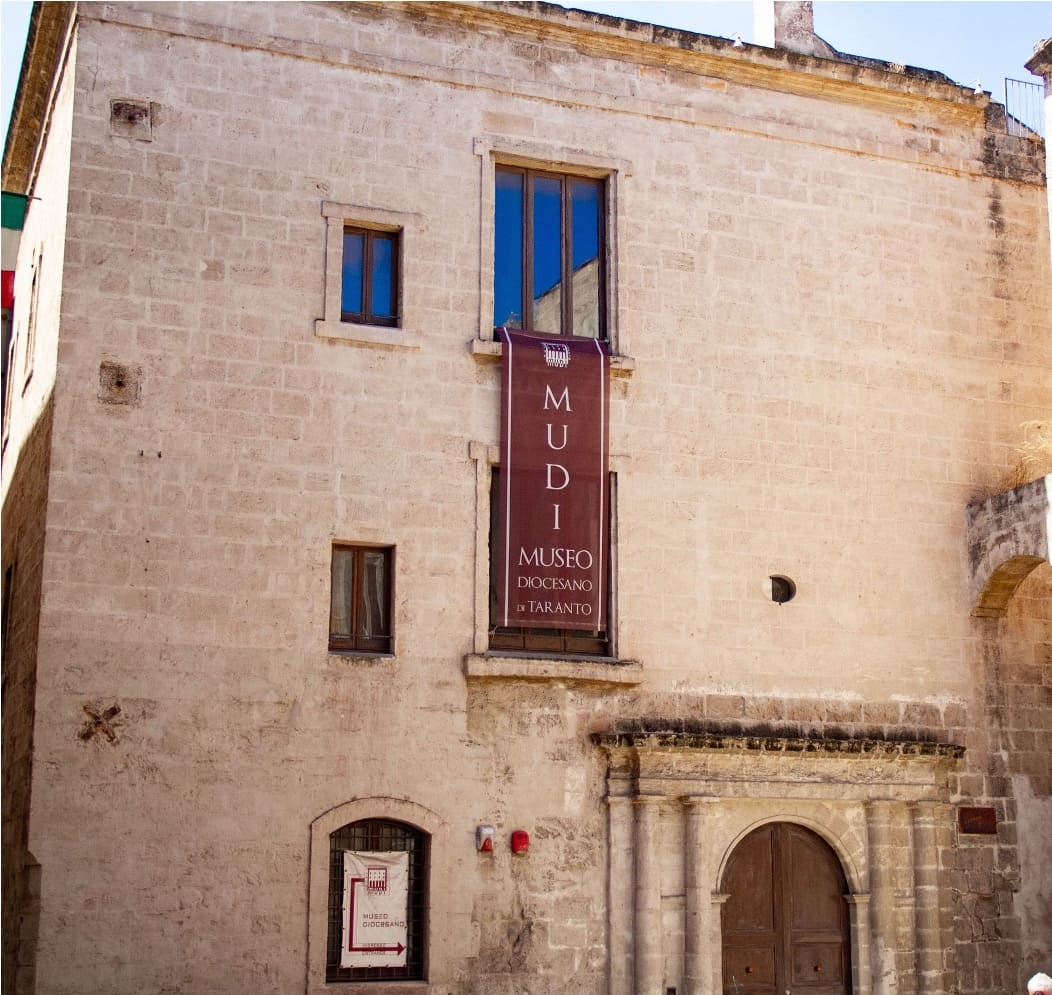
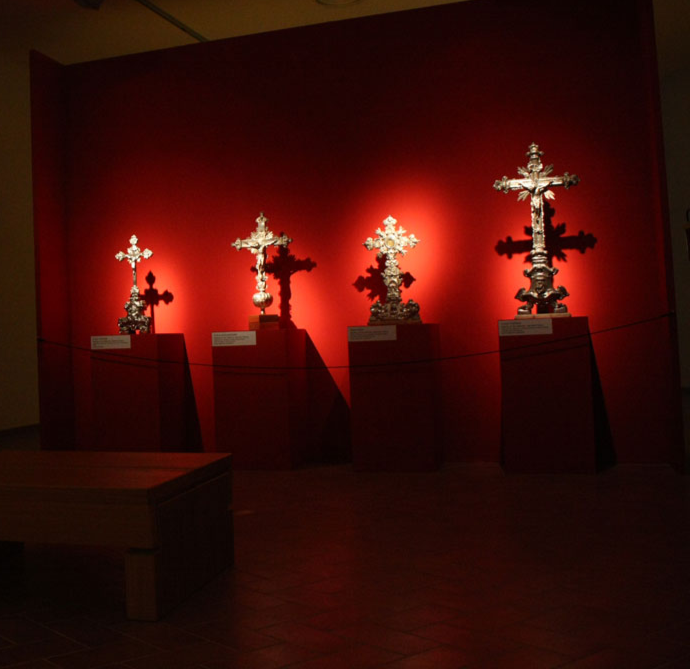
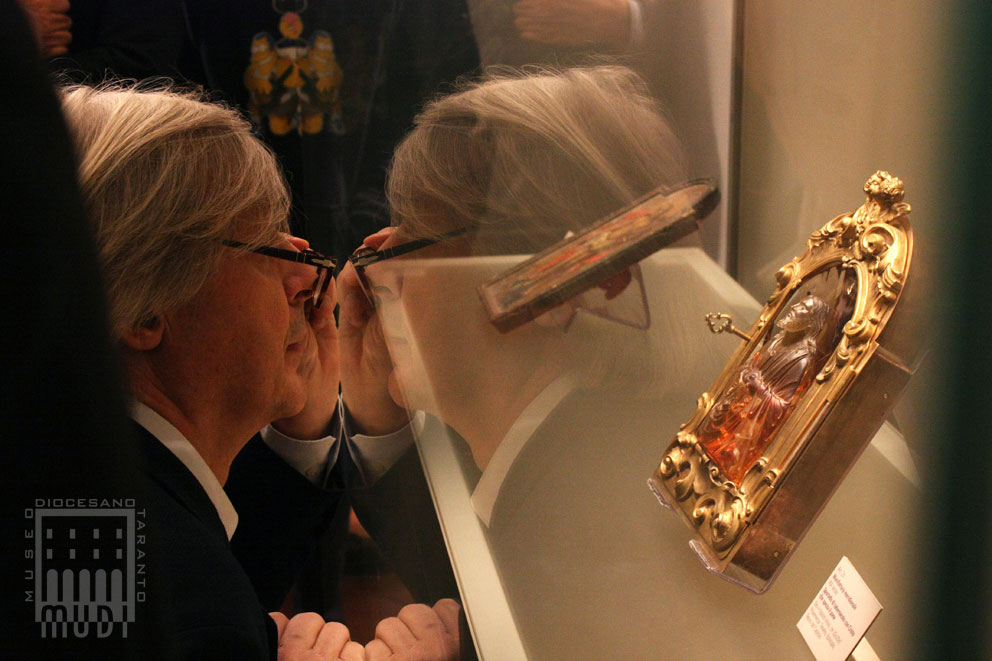
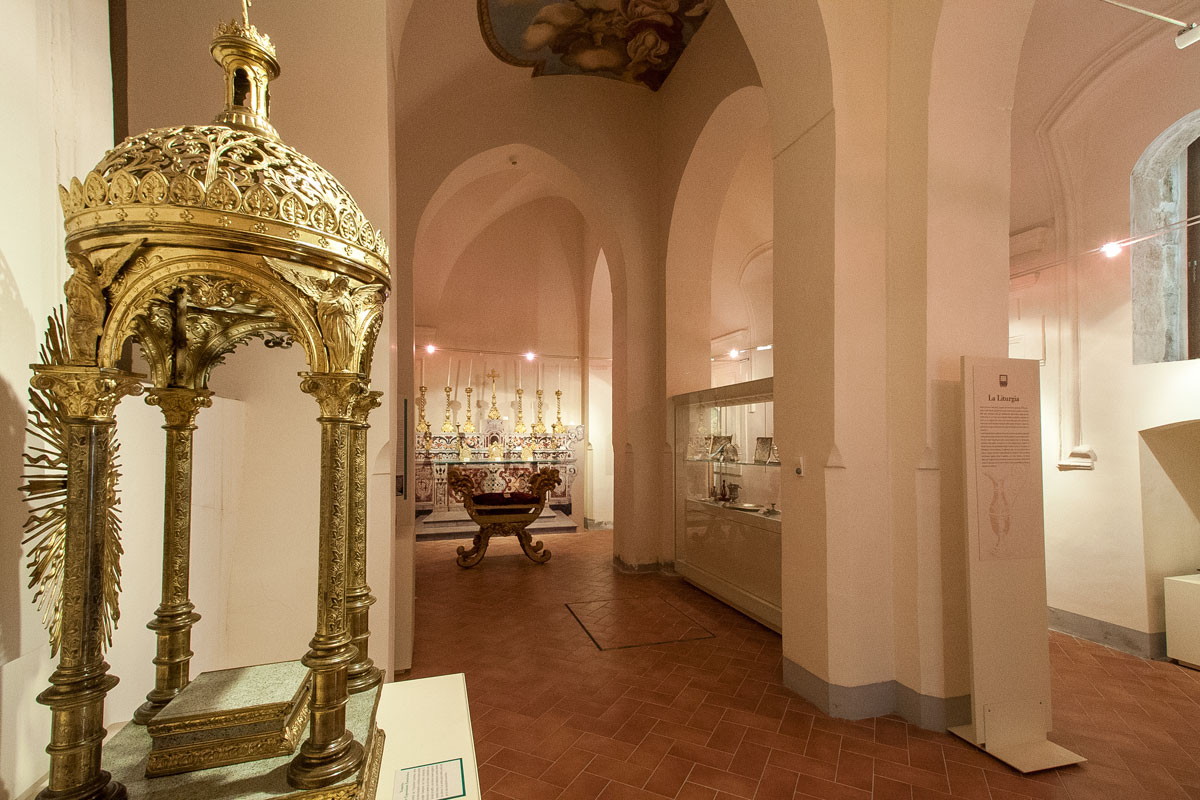
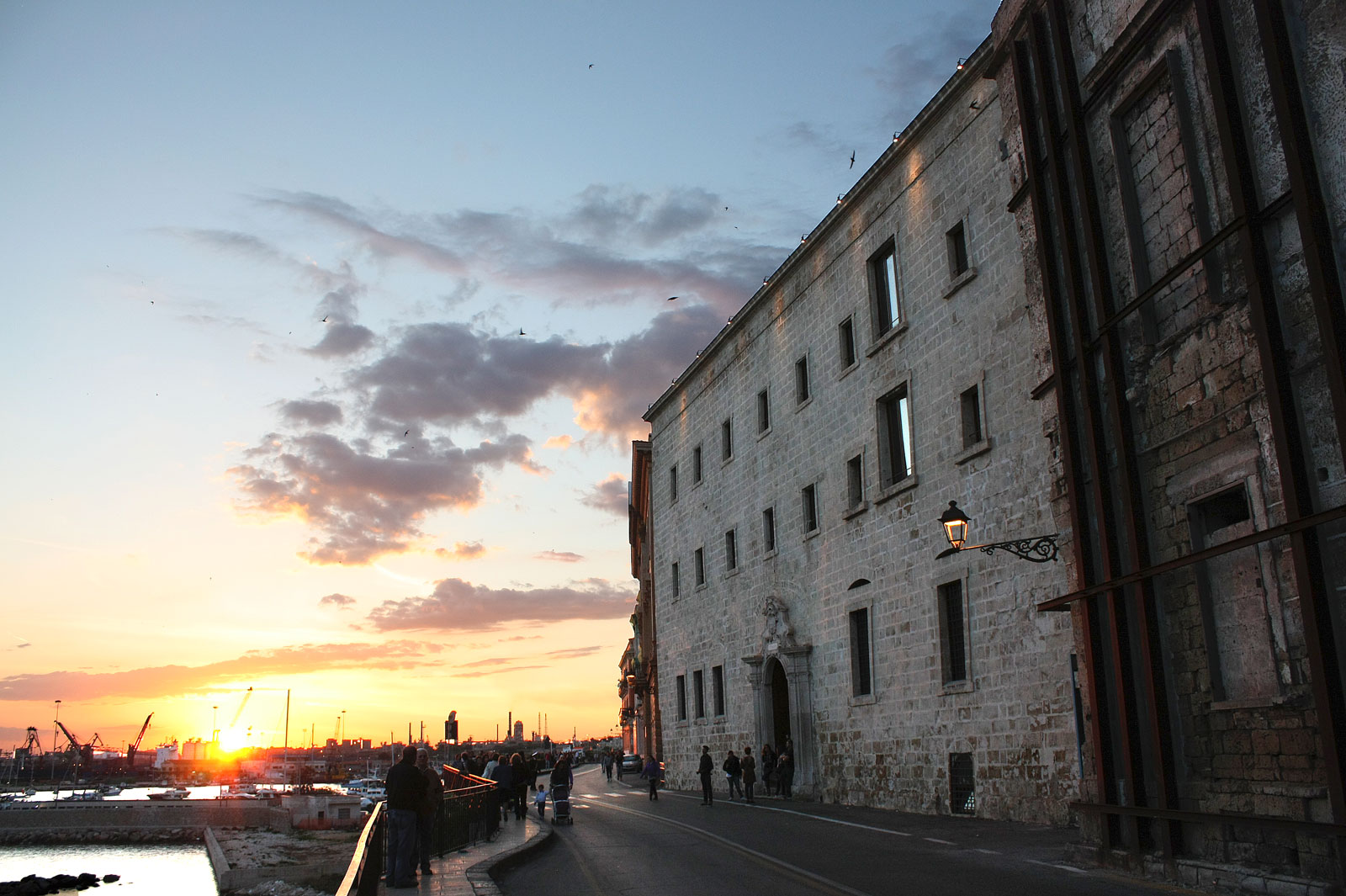
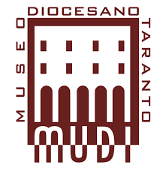
MuDi - Diocesan Museum of Sacred Art
Museums
The MuDi (Diocesan Museum of Taranto), located in the heart of the Old City of Taranto behind the Cathedral Basilica of San Cataldo, is a young museum owned by the Archdiocese of Taranto, inaugurated on May 6, 2011. It appears to be a proposal of interest historical-artistic, cultural and architectural now emerging in the Taranto area, as it allows you to know a long piece of the history of the city, hosting testimonies of great historical, artistic and religious value starting from the seventh century. A.D. up to the present day.
The permanent exhibition itinerary, divided into seven thematic sections, is developed on three levels and showcases over 400 works, including a fair amount of sculptural artefacts clearly referable to cultural areas of great interest, a rich pictorial documentation, precious sacred vestments, as well as a varied amount of liturgical furnishings with very precious materials. Of considerable value are the silvers and golds coming mainly from the so-called Treasury of San Cataldo, patron saint of the city.
history
The building that currently houses the MuDi is already in itself a museum of ancient architecture, with suggestive corridors, a large internal cloister and wonderful views of the sea. The structure housed the seminary of the Archdiocese of Taranto for centuries and was inaugurated on June 1, 1568. Between the 16th and 18th centuries, the complex was the subject of restoration and expansion works, promoted by various archbishops. At the beginning of the nineteenth century it suffered the occupation of French troops and was reopened after the Restoration; due to the dilapidation of the structure, from 1965 it remained in a state of neglect, until the restructuring took place in the last decades of the twentieth century. In the following years the works of adaptation and museum preparation were carried out.
curiosity
The museum collection hides extraordinary secrets, thanks to the presence of unique artifacts for the preciousness of the materials and their history. A very rare example of a fine linen tapestry is preserved, a yarn obtained from the Pinna nobilis, manufactured in Taranto. Extraordinary are the ivory crucifixes of the Flemish school, altar sets in ivory and mother of pearl, as well as in coral and lapis lazuli. Of great historical and religious value is the ancient golden cross from the 7th century AD. found, according to the most ancient hagiographic sources, on the chest of the patron saint of Taranto San Cataldo in 1071, at the time of the discovery of the body inside the marble sarcophagus.
But the real flagship of MuDi is the largest artistic jewel in the world: a priceless tabernacle door made of a carved 1.5 kg topaz.
The MuDi (Diocesan Museum of Taranto), located in the heart of the Old City of Taranto behind the Cathedral Basilica of San Cataldo, is a young museum owned by the Archdiocese of Taranto, inaugurated on May 6, 2011. It appears to be a proposal of interest historical-artistic, cultural and architectural now emerging in the Taranto area, as it allows you to know a long piece of the history of the city, hosting testimonies of great historical, artistic and religious value starting from the seventh century. A.D. up to the present day.
The permanent exhibition itinerary, divided into seven thematic sections, is developed on three levels and showcases over 400 works, including a fair amount of sculptural artefacts clearly referable to cultural areas of great interest, a rich pictorial documentation, precious sacred vestments, as well as a varied amount of liturgical furnishings with very precious materials. Of considerable value are the silvers and golds coming mainly from the so-called Treasury of San Cataldo, patron saint of the city.
history
The building that currently houses the MuDi is already in itself a museum of ancient architecture, with suggestive corridors, a large internal cloister and wonderful views of the sea. The structure housed the seminary of the Archdiocese of Taranto for centuries and was inaugurated on June 1, 1568. Between the 16th and 18th centuries, the complex was the subject of restoration and expansion works, promoted by various archbishops. At the beginning of the nineteenth century it suffered the occupation of French troops and was reopened after the Restoration; due to the dilapidation of the structure, from 1965 it remained in a state of neglect, until the restructuring took place in the last decades of the twentieth century. In the following years the works of adaptation and museum preparation were carried out.
curiosity
The museum collection hides extraordinary secrets, thanks to the presence of unique artifacts for the preciousness of the materials and their history. A very rare example of a fine linen tapestry is preserved, a yarn obtained from the Pinna nobilis, manufactured in Taranto. Extraordinary are the ivory crucifixes of the Flemish school, altar sets in ivory and mother of pearl, as well as in coral and lapis lazuli. Of great historical and religious value is the ancient golden cross from the 7th century AD. found, according to the most ancient hagiographic sources, on the chest of the patron saint of Taranto San Cataldo in 1071, at the time of the discovery of the body inside the marble sarcophagus.
But the real flagship of MuDi is the largest artistic jewel in the world: a priceless tabernacle door made of a carved 1.5 kg topaz.
explore the museum from your smartphone
Start exploring part of the Museum through the Virtual Tour. You will be able to perceive the historical and artistic heritage that characterizes the Diocesan Museum of Sacred Art
Guided tour
Have you already visited the Diocesan Museum of Sacred Art of Taranto? The permanent exhibition itinerary, divided into seven thematic sections, is developed on three levels and showcases over 350 explanatory works of the history of the Archdiocese of Taranto
Plan your event
Organize your event at the Diocesan Museum of Sacred Art in Taranto. Auditorium, Court and Exhibition Halls to enhance theatrical and musical events, conferences, art reviews, presentations, workshops and exhibitions.
News
Do you want to know the latest news on MuDi? Stay up to date on all the initiatives of the Diocesan Museum of Sacred Art of Taranto!
Tourist route
Discover the recommended tourist route to visit the Diocesan Museum of Sacred Art and the other points of historical and cultural interest in the immediate vicinity
Nearby
Do you want to continue the tour? The Cathedral of San Cataldo is not far away! Discover the artistic and cultural heritage of the Taranto Cathedral just a few steps away
Sea Experiences
If you want to live Taranto at 360 °, do not miss the experiences available! Do you want to reach the dolphins with the Jonian Dolphin Conservation or just spend a day on a sailing boat? Discover Taranto Capitale di Mare
MuDi - Diocesan Museum of Sacred Art
Museums
The MuDi (Diocesan Museum of Taranto), located in the heart of the Old City of Taranto behind the Cathedral Basilica of San Cataldo, is a young museum owned by the Archdiocese of Taranto, inaugurated on May 6, 2011. It appears to be a proposal of interest historical-artistic, cultural and architectural now emerging in the Taranto area, as it allows you to know a long piece of the history of the city, hosting testimonies of great historical, artistic and religious value starting from the seventh century. A.D. up to the present day.
The permanent exhibition itinerary, divided into seven thematic sections, is developed on three levels and showcases over 400 works, including a fair amount of sculptural artefacts clearly referable to cultural areas of great interest, a rich pictorial documentation, precious sacred vestments, as well as a varied amount of liturgical furnishings with very precious materials. Of considerable value are the silvers and golds coming mainly from the so-called Treasury of San Cataldo, patron saint of the city.
history
The building that currently houses the MuDi is already in itself a museum of ancient architecture, with suggestive corridors, a large internal cloister and wonderful views of the sea. The structure housed the seminary of the Archdiocese of Taranto for centuries and was inaugurated on June 1, 1568. Between the 16th and 18th centuries, the complex was the subject of restoration and expansion works, promoted by various archbishops. At the beginning of the nineteenth century it suffered the occupation of French troops and was reopened after the Restoration; due to the dilapidation of the structure, from 1965 it remained in a state of neglect, until the restructuring took place in the last decades of the twentieth century. In the following years the works of adaptation and museum preparation were carried out.
curiosity
The museum collection hides extraordinary secrets, thanks to the presence of unique artifacts for the preciousness of the materials and their history. A very rare example of a fine linen tapestry is preserved, a yarn obtained from the Pinna nobilis, manufactured in Taranto. Extraordinary are the ivory crucifixes of the Flemish school, altar sets in ivory and mother of pearl, as well as in coral and lapis lazuli. Of great historical and religious value is the ancient golden cross from the 7th century AD. found, according to the most ancient hagiographic sources, on the chest of the patron saint of Taranto San Cataldo in 1071, at the time of the discovery of the body inside the marble sarcophagus.
But the real flagship of MuDi is the largest artistic jewel in the world: a priceless tabernacle door made of a carved 1.5 kg topaz.
contacts
Vicolo I Seminario, Taranto TA
museodiocesanotaranto.it
museodiocesano@diocesi.taranto.it
099 471 60 03
useful information
accessible
payment
average stay: 120 min.
- Su prenotazione